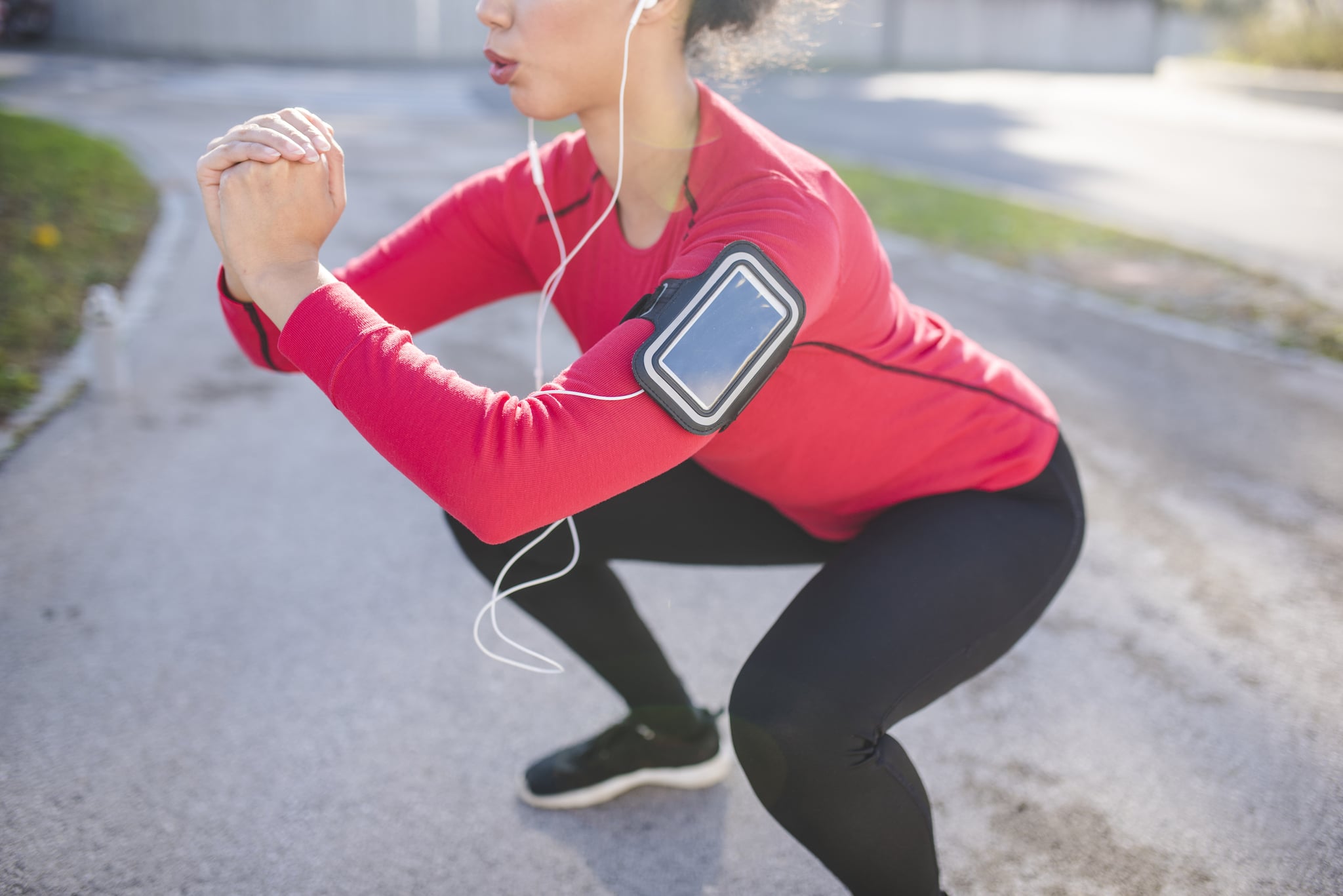
Doing squats can be daunting if you tend to experience knee pain in your workout routine — but don’t write off the move just yet.
According to fitness expert and ACSM-certified trainer John Ford, the squat motion is worked into everyday life — even outside of exercise.
“The good and the bad of the situation is that even if you have knee pain, the way life works is that you’ll always be doing squat motions to get up and down from sitting, which means it’s still important to work on the motion.”
Of course, if you are experiencing knee pain, you should call up your doctor to prevent further injury — and if you’ve already been told to avoid the exercise altogether, you should follow that direction.
If squats are safe for you to perform, it might be time to modify the move or really ace your form. Ahead, Ford explains a few variations he generally suggests for clients that have knee pain.
The Assisted Squat
“The assisted squat motion is one of my favorite moves and one that I go back to time and time again,” Ford says. “It’s really good at developing your upper thigh and glute muscles to control the squat motion as to alleviate pressure on the knees during the squat movement. Additionally, it’s a great hip opener, as it allows for you to work on dropping your squat past parallel.”
To do an assisted squat, Ford says a client will hold onto the back of a chair, railing, or a banister — the feet will be closer to the railing and the arms will be extended straight with the torso upright. “To start the motion, I have clients start to sit back keeping their torso as straight as possible and shifting their weight into their heels. They proceed with the motion by dropping their hips down and slightly back to ideally form perfect right angles with their knee joints. There should be a good amount of tension in their arms, as we are using the arms to control the range and pace of the motions, as well as the amount of weight loaded into the motion.”
Squatting With an Eccentric Focus on the Movement
After the assisted squat, Ford works with clients on focusing on the eccentric portion of the squat, or the downward motion.
“You start the motion by shifting weight onto your heels and shifting your weight slightly backward as you begin to bend your knees in the squat. This will prevent you from shifting your body weight forward and into the knees. You then focus on dropping your hips lower as your knees bend. Ideally, we don’t want to see a noticeable shift forward of the knees past the ankle during the motion. You then stand back up by pushing through your heels, firing your glutes, and then quadriceps to bring you back to upright standing position.”
Single Leg Squat
This is the most advanced variation, so beginners shouldn’t attempt it. But once you’ve worked up to doing a single-leg squat, Ford says “it is a really beneficial at-home leg strengthener and hip opener.”
First step — you put your back foot up on a chair, stair, or stool. Then, move the front leg forward about 2-2.5 feet from that chair, stair, or stool. “You want to have enough space to allow yourself to drop down into a right angle in the front knee while maintaining an almost fully upright torso. Your back leg in this motion will ideally fold back, meaning your glute will move towards your heel as if you were doing a quad stretch of the back leg,” Ford says.
To start the motion back up again, Ford says to focus on pushing through the heel or back part of the foot. “This emphasis will help alleviate forward loading and pressure on the knee.”
Click here for more health and wellness stories, tips, and news.
